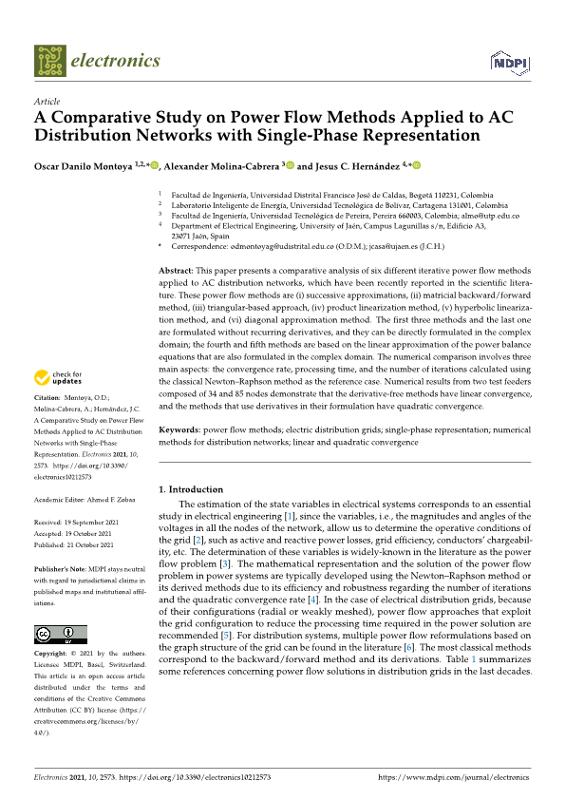Abstract
This paper presents a comparative analysis of six different iterative power flow methods applied to AC distribution networks, which have been recently reported in the scientific literature. These power flow methods are (i) successive approximations, (ii) matricial backward/forward method, (iii) triangular-based approach, (iv) product linearization method, (v) hyperbolic linearization method, and (vi) diagonal approximation method. The first three methods and the last one are formulated without recurring derivatives, and they can be directly formulated in the complex
domain; the fourth and fifth methods are based on the linear approximation of the power balance equations that are also formulated in the complex domain. The numerical comparison involves three main aspects: the convergence rate, processing time, and the number of iterations calculated using the classical Newton–Raphson method as the reference case. Numerical results from two test feeders composed of 34 and 85 nodes demonstrate that the derivative-free methods have linear convergence, and the methods that use derivatives in their formulation have quadratic convergence














